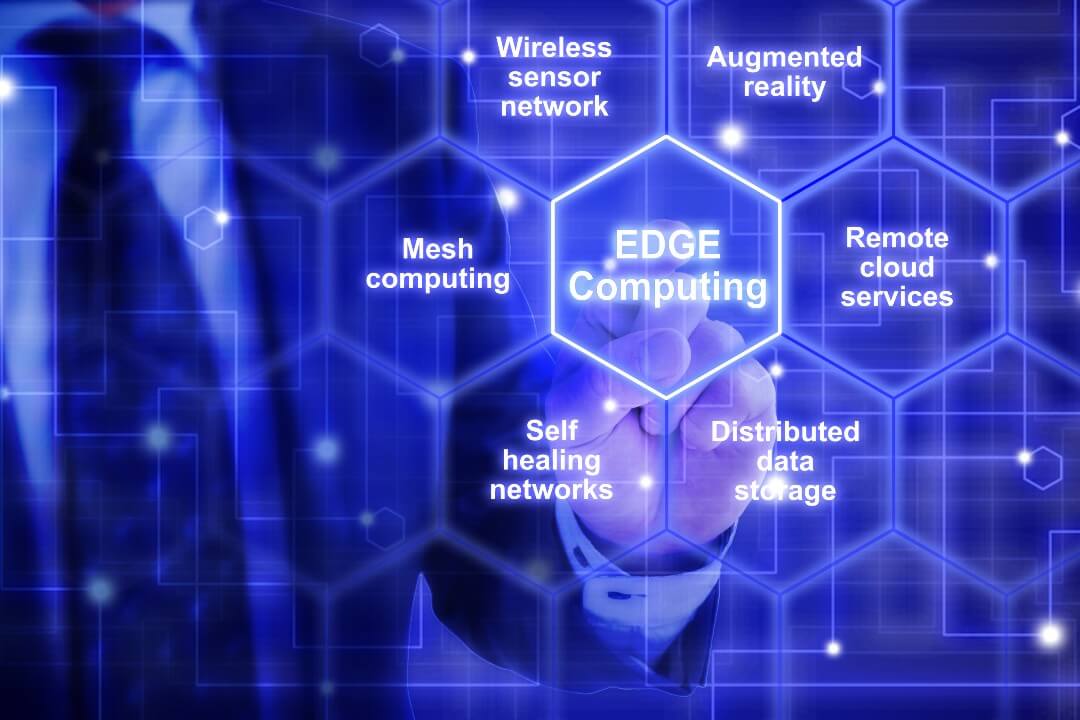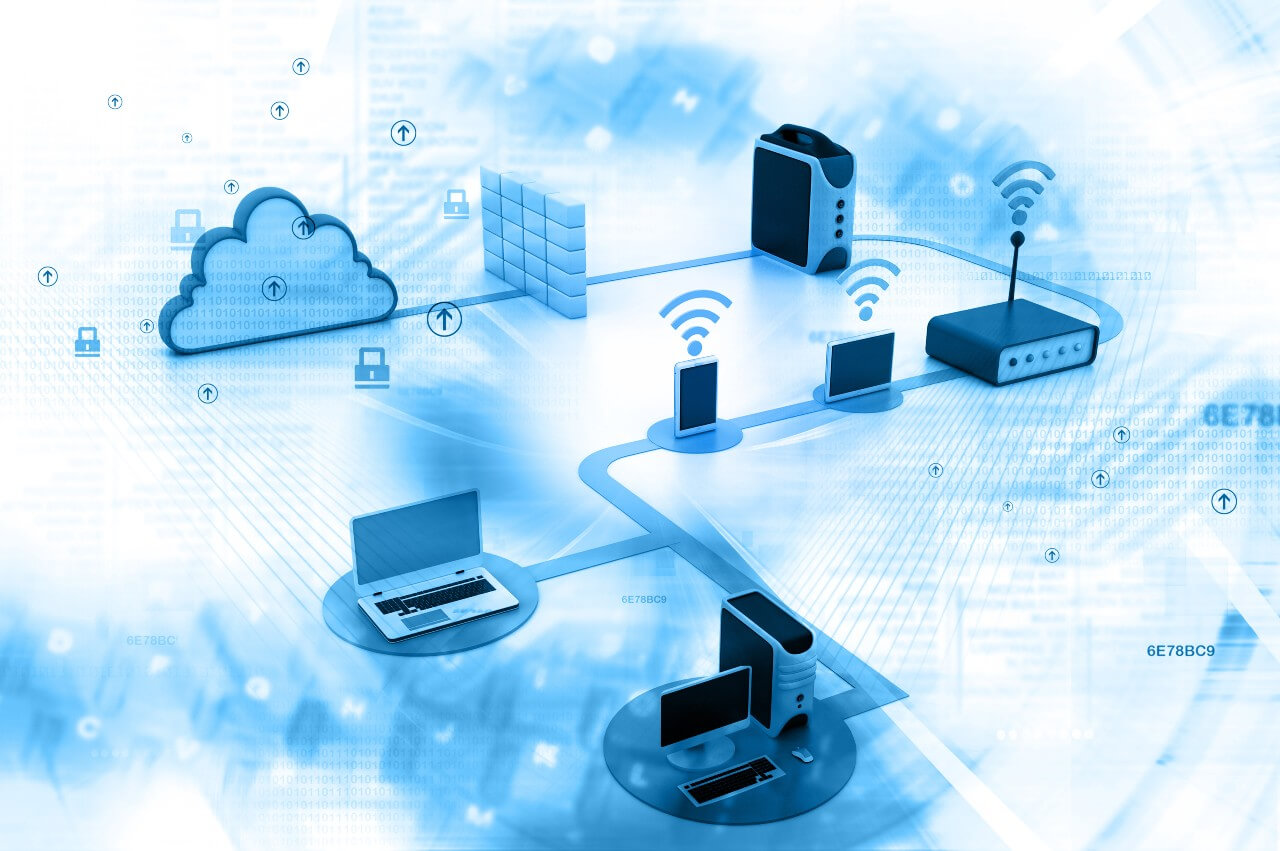New technologies such as IoT offer infinite possibilities. But businesses trying to implement such possibilities often face a reality-check in the form of resource constraints and infrastructure limitations.
Bandwidth limitations, latency issues, and unpredictable disruptions make the cloud unsuitable for many new-technology applications. The sheer number of devices connected to the Internet and the increasing volume of data subverts traditional data centre infrastructure. For instance, a single autonomous vehicle generates anywhere between 5 TB and 20 TB of data a day. Moving such a huge quantum of data to distant cloud servers causes congestion and leads to time-consuming retransmissions. Increasing bandwidth to cater to the petabytes of data emitted by today’s enterprises is cost-prohibitive.
Edge computing offers a solution to such bottlenecks. Edge is a distributed IT architecture that processes data at the periphery of the network rather than transports it to distant cloud servers. For instance, the edge architecture involves setting up an enclosure with some servers atop a wind turbine or near a retail outlet.
The edge is not a replacement for the cloud. Rather, it strengthens the hybrid cloud architecture. The edge may take the place of the private cloud or the edge may become the third computing source, apart from the private and public cloud servers. Here are the ways your business could benefit from the edge.
1. Ensure Speed and Resiliency
The edge compliments the cloud and enables a flexible, scalable, and agile business ecosystem. Businesses deploying edge computing become more efficient. They perform their tasks faster, in a more cost-effective manner.
Existing commercial fibre-optic technology transmits data at 2/3 the speed of light. For instance, data moves from New York to San Francisco in 21 milliseconds. The “last mile” bottleneck, or the quality of the network receiving the data, adds 10 to 65 milliseconds of latency. But as data volumes reach petabytes and zettabytes, digital traffic jams will become commonplace. By 2025, the world will generate 463 exabytes of data a day. One exabyte is equal to a billion gigabytes.
Processing data closer to the source reduces latency and delivers higher speeds for end-users. Local storage collects raw data, and local servers perform essential edge analytics. Only the results, or essential data, move to the central data server in the cloud. Latency reduces to microseconds rather than milliseconds.
For business decisions based on real-time insights, the improved speed and reduced latency make a big difference. For large enterprises, a single moment of latency or downtime costs thousands of dollars. Lagging speeds frustrate customers and cause long-term damage to a brand.
2. Improved Quality
Edge computing enables businesses to make better decisions and improve the quality of their actions.
Processing at the edge enables:
- IT admins to optimise the network performance of time-sensitive traffic. The analytics engine at the edge determines the most reliable, low-latency network path for each user’s traffic.
- Business strategists to drive real-time automation. Edge processing eliminates processing and communication lags.
- Predictive analytics at source guide equipment maintenance. Instant alerts of erratic reading enable prompt servicing, pre-empting failures.
- Sensors and analytics tools at the edge enable actionable business intelligence. Processing data closer to the point of the transaction enables instant follow-up, to close deals, or make up-sells.
- Processing data near the source improves the Augmented Reality experience.
Specific opportunities abound in almost every industry. Consider manufacturing as an example. Cloud edge setup improves the monitoring of manufacturing operations. Real-time analytics, powered by machine learning algorithms, unearth flaws or errors. Instant remediation improves the quality of the products. Sensors on the shop floor offer deep insight into the assembly and storage of components. The manufacturer may make better decisions regarding production levels, inventory, and other aspects.

3. Enable New Insights
Cloud edge computing unlocks new possibilities not possible with the conventional cloud.
The one-size-fits-all approach is not always suitable in retail. Edge helps businesses localise strategies at the unit level. Retailers may analyse vast swathes of data from surveillance cameras, stock tracking systems, POS machines, and other places. Analysing such data at the source makes it easier to identify business opportunities. Marketers may, for instance, launch a promotion to clear out a product nearing the expiry date in a specific supermarket. Video surveillance of the showroom floor paired with sales data makes explicit the best display options.
In healthcare, a fraction of a second can make the difference between life and death. Clinicians deploy edge computing to apply machine learning and automation to patent data. Real-time analysis pin-points problem data and offers deeper insights not available before. Clinicians may take immediate action to avoid health incidents.
Computing power at the edge enables autonomous systems. Consider the next generation of intelligent traffic control signals. These systems rely on vehicles and traffic controls exchanging data in real-time. Edge caters to the needs of a fast and responsive network for such an ecosystem.
Sensors at the edge improve indoor farming. The sensors track vital parameters, such as water levels and nutrient density, to ensure optimal growth. Analysis of environmental data enables harvesting crops in peak conditions.
4. Improved Field Service Capabilities
A key area of application of edge computing is in field services, where real-time computing has always been weak. Connectivity is often limited or unreliable at oil rigs, ships, remote farms and other field locations. Edge computing enables the analysis of data on onboard vehicles, ships, and remote installations. Processing data locally enables real-time analysis, even with low bandwidth or disrupted connections. It also reduces the data transfer volumes, reducing bandwidth requirements.
With edge computing servers deployed in field service vehicles, the business may gather and analyse information about location, speed, and other variables in real-time. Each vehicle becomes an “edge” offering instant decisions that make possible accurate ETAs, streamline scheduling, and more. Businesses may manage their fleet based on actual conditions on the ground rather than on assumed benchmarks.
5. Improved Safety
Innovative businesses deploy edge computing to improve safety and meet compliance obligations.
The centralised nature of the traditional cloud makes it vulnerable to DDoS attacks and power outages. The distributed nature of edge computing makes it immune from any single disruption. Also, it becomes easier to seal off compromised portions without shutting down the entire network. Processing more data locally reduces the amount of data at risk in a single moment.
Edge servers collect and analyse data from on-site cameras, employee safety devices, and other sensors. Often, transmitting such bandwidth-intensive traffic is expensive and causes lags. The system issues alerts when the readings go outside the norm, enabling instant action.
Edge computing is the future of the Internet. It offers businesses improved ways to automate processes, work optimally, and be always on. It offers a robust backbone for the enterprise to go fully digital, and leverage the benefits of digital transformation. Enterprises who ignore the possibilities offered by edge computing do so at their peril.












